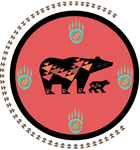Reports the progress of a prevention demonstration grant program which combined several complementary strategies (a school-based cultural curriculum, training of teachers, development of a leadership core group, and a community curriculum) in an effort to address the self-perception of personal and communal powerlessness of Native Americans, which places them at risk for drug and alcohol abuse. A survey of 4th–12th grade students was used to examine substance use, school bonding and the relationship between cultural affiliation and substance use for the youth population. Two sets of outcome results, quantitative and qualitative, are reported and discussed in relation to the Freirian model of community empowerment. (PsycINFO Database Record (c) 2016 APA, all rights reserved)
This website is supported by Grant Number 90CZ0034-01-00 from the Children’s Bureau within the Administration for Children and Families, a division of the U.S. Department of Health and Human Services. Neither the Administration for Children and Families nor any of its components operate, control, are responsible for, or necessarily endorse this website (including, without limitation, its content, technical infrastructure, and policies, and any services or tools provided). The opinions, findings, conclusions, and recommendations expressed are those of the author(s) and do not necessarily reflect the views of the Administration for Children and Families and the Children’s Bureau.

